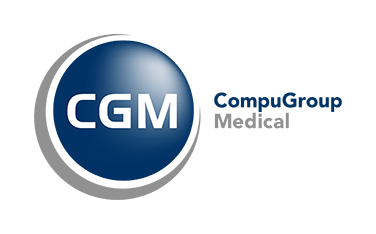Healthcare reimbursement can be a long, complicated, and frustrating process. Traditionally, the medical billing and coding processes that practices need to complete for healthcare reimbursement has involved many steps, any of which can be easily derailed. When these processes are done manually, (manually keying claims) there’s a higher potential for medical billing errors, low first-pass resolution rates, and time-consuming administrative tasks.
While traditional on-paper billing and coding has an important role to fill in the medical reimbursement industry, electronic health records (EHRs) have been significantly reducing the administrative drain on practices. As noted in this case study, an EHR system can help practices streamline their revenue cycle by maximizing resources, lowering error rates, and increasing efficiency.
What makes the process of medical billing and coding so complex?
Medical coding plays a critical role in preventing denials, claim rejections, and proper reimbursement. EHR systems have released numerous features over the years to help with things like provider documentation, code lookup/search and claims scrubbing. With over 69,000 ICD-10 codes alone, EHRs with proper coding systems can help providers to lower denial rates by guiding them to the appropriate Current Procedural Terminology (CPT®) codes, ICD-9/ICD-10 codes, and the Health and Care Professionals Council (HCPC) standards.
Payers often have very particular parameters that must be met for them to accept a claim, and their expectations frequently change. Denied claims are a major source of lost revenue for medical practices. Errors such as incorrect diagnosis and/or procedure codes will most likely result in a claim being denied completely. Denied claims will then need to be re-worked, which will cost practices additional time and resources.
According to Modern Healthcare, hospitals in the United States lose $262 billion annually due to claim denials or rejections. If a hospital or practice cannot secure a claim that’s been denied, then they end up having to find other ways to counteract the cost. Rejections and denials mainly occur due to:
- Errors with claim forms (between 40% and 80% of medical bills have errors)
- Code errors
- Missed claim submission deadlines
Claim rejections (which don’t necessarily involve a permanent denial of payment) are often due to simple clerical errors. Everything in a claim needs to be correct and meet the insurer or payers demand to avoid rejection. Rejections can be triggered from small errors such as a patient’s name being misspelled or the digits in an ID number being transposed.
While these errors can be quickly fixed, they do prolong the revenue cycle and require claims to be re-worked (which means more time and effort is spent and delays when the practice will receive reimbursement).
How can your integrated EHR help with medical billing and coding?
Medical coding starts when a patient encounter occurs, and providers detail the visit or service in the patient’s EHR. With integrated EHR software, providers can easily explain—using the correct codes—why they furnished specific services, items, or procedures. EHR systems are designed to automate many tasks that save physicians time and energy, such as electronic prescriptions and claim processing.
Accurate and complete clinical documentation during the patient encounter—keyed into the practice’s EHR—is critical for successful medical billing and coding. Many people in the industry consider the “golden rule” of the healthcare billing and coding departments to be: “Do not code it or bill for it if it’s not documented in the medical record.”
Electronic health records help providers and practices to organize paperwork, reduce errors in patient care, and streamline processes (e.g., cutting administrative costs). Medical billers and coders can then use the information they receive from EHR systems to justify any financial reimbursement from insurance companies while maintaining an accurate legal record of medical events.
Electronic health record (EHR) solutions such as CGM APRIMA—with features to assist with coding, denial management, and charge capture—can be crucial to the success of your practice’s billing operations.
Diagnosis codes are key to describing a patient’s condition or injury, as well as social determinants of health and other patient characteristics. However, no provider can hope to know every code associated with each encounter off the top of their head. There are more than 69,000 unique identifiers in the ICD-10-CM (clinical modification) code set alone.
Manual medical billing is a top challenge for provider organizations of all sizes. Medical billing and coding are both integral parts of the healthcare reimbursement system. When an EHR can help to save physicians time and ensure higher levels of accuracy, then they can be reassured that the medical billing and coding cycle runs as smoothly as possible.
By streamlining the revenue cycle—as seen in the story of Summit OBGYN adopting ARIA RCM Services—providers get paid for services delivered faster, and provider organizations are able to remain open while delivering high-quality care to patients since the financial health of a practice is equally as important as the quality of care provided.
Automation of clinical documentation, more accurate coding, and more
- Enhanced ability to meet important regulation requirements (HIPAA, HCPCS, etc.)
- Reduction of time and resources needed for manual charge entry (this means more accurate billing and minimizes the number of lost charges)
- Reduction in vendor/insurance denials due to late filing
- Charge review edits alert physicians about whether or not a test can be performed only at a certain frequency
- Reduce the number of claim denials and lost charges related to inaccurate CPT, ICD-9/ICD-10, or other coding
Does your EHR allow you to code your medical bills more easily prior to claim submission (so you can have the lowest denial rates you can)?
Contact us to find out how CompuGroup Medical and its suite of e-health software and services can help.


